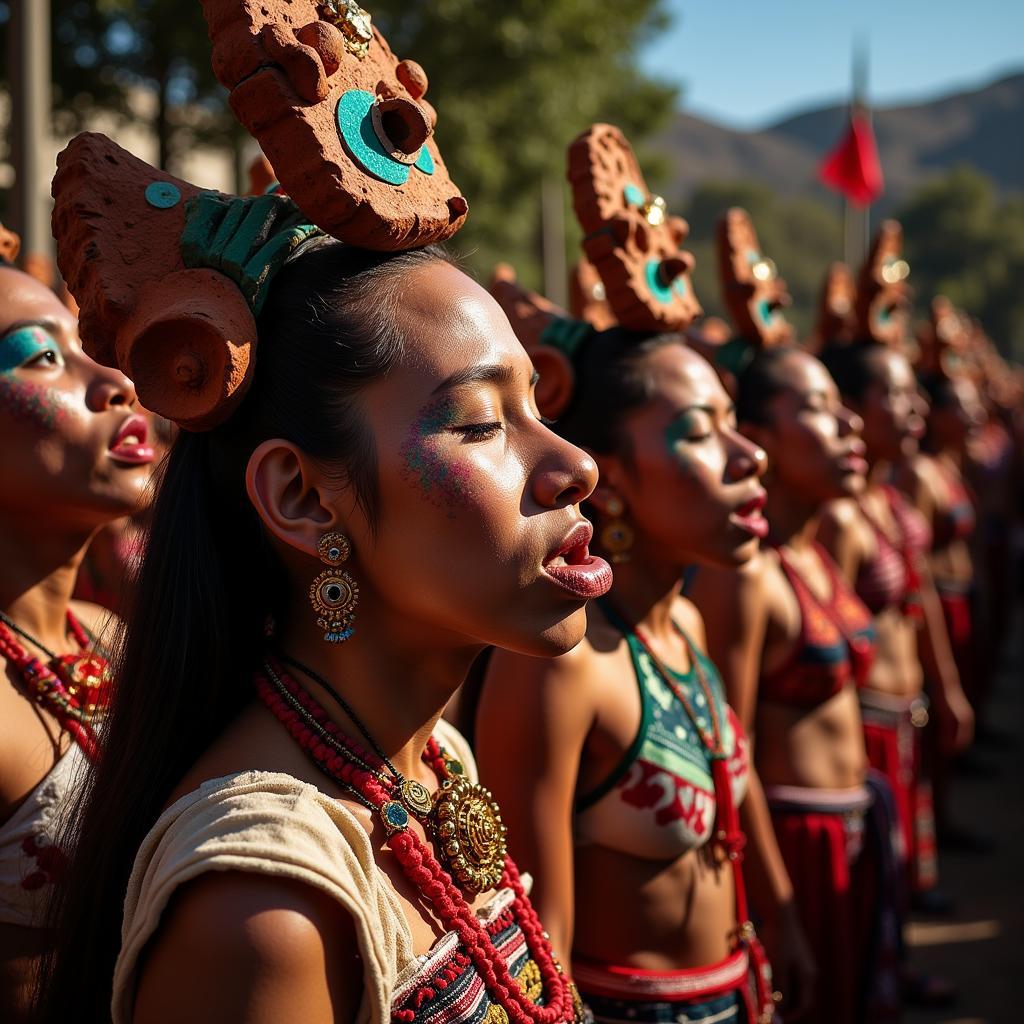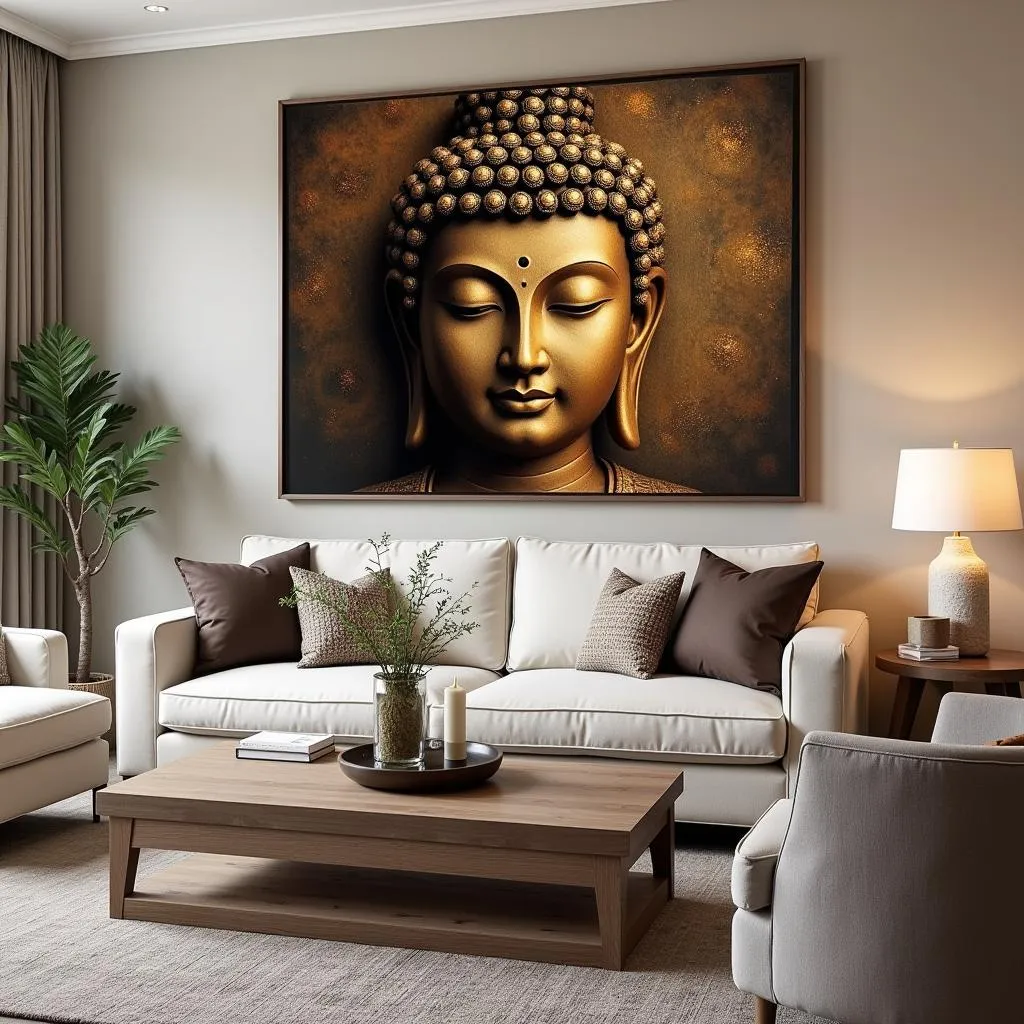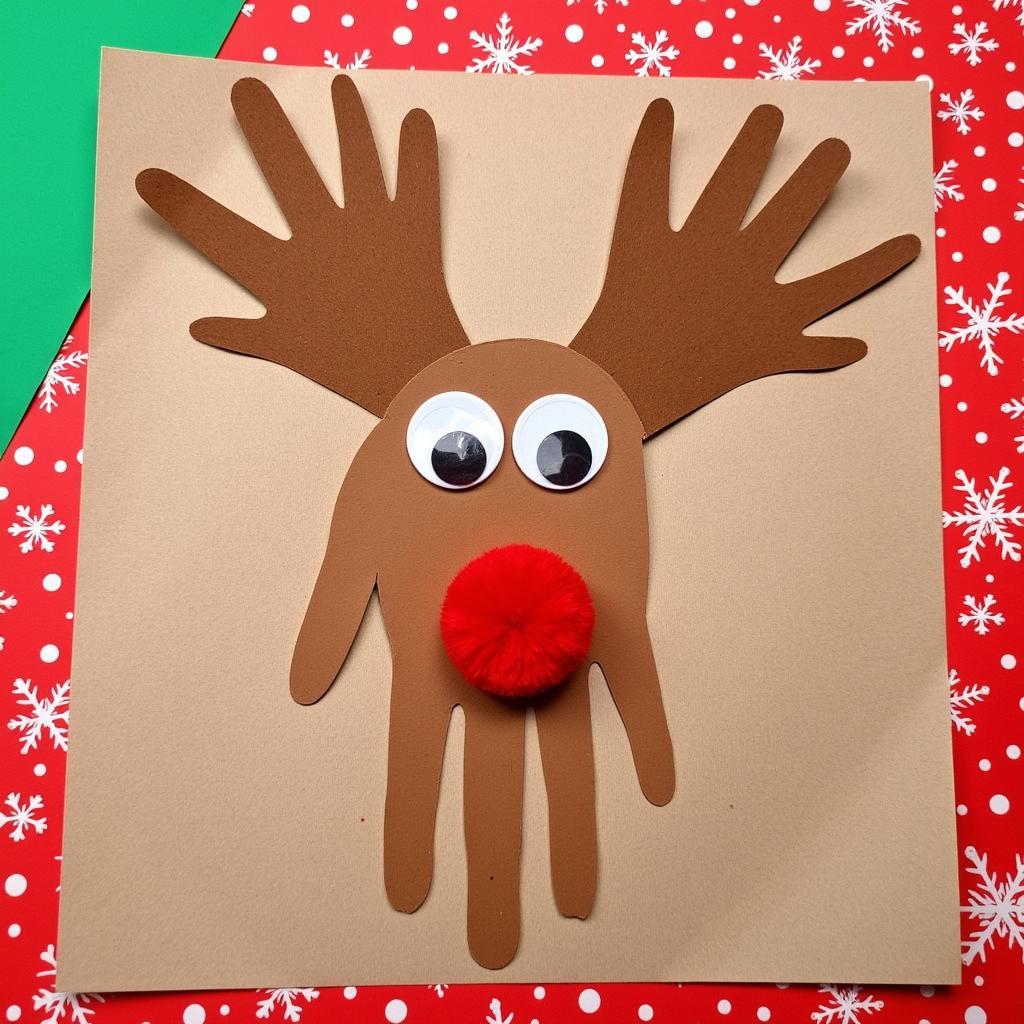Discovering the Art of Mexican Clay Masks
The vibrant culture of Mexico finds a unique expression in its folk art traditions, and among the most captivating is the art of “Mexican Clay Mask Art”. These intricate and expressive masks, often adorned with vibrant colors and symbolic designs, offer a glimpse into the heart of Mexican heritage, spirituality, and artistic brilliance.
A Journey Through Time: The History of Mexican Clay Masks
 Ancient Mexican Clay Masks
Ancient Mexican Clay Masks
Mexican clay masks boast a rich history dating back thousands of years. Archaeological evidence suggests that pre-Columbian civilizations, including the Olmec, Maya, and Aztec, crafted masks for ceremonial and ritualistic purposes. These early masks, often representing deities, animals, or mythical beings, played a vital role in religious practices, social hierarchies, and cultural expression.
From Ritual to Art: The Evolution of a Tradition
 Mexican Clay Masks in Rituals
Mexican Clay Masks in Rituals
Over time, the function of Mexican clay masks evolved beyond their ceremonial origins. While they continued to hold spiritual significance, masks also became integral to traditional dances, theatrical performances, and festive celebrations. This transition from ritualistic objects to artistic expressions led to the development of distinct regional styles, each characterized by unique materials, techniques, and aesthetic elements.
The Language of Symbols: Decoding Mexican Clay Mask Designs
One of the most fascinating aspects of Mexican clay masks lies in their intricate symbolism. Every detail, from the choice of colors to the arrangement of patterns, carries deep cultural and spiritual meaning.
For example, the color red often represents blood, sacrifice, and the cycle of life and death. Green symbolizes nature, fertility, and abundance, while blue represents the heavens, water, and the divine. Animal imagery, frequently incorporated into mask designs, evokes the characteristics and powers associated with those creatures.
Crafting Tradition: Techniques and Materials in Mexican Clay Mask Making
The creation of a Mexican clay mask is a meticulous process passed down through generations of artisans. While techniques may vary slightly between regions, the fundamental steps involve gathering local clay, molding it into the desired shape, allowing it to dry, and then firing it in a kiln to harden the clay.
Once fired, the masks are meticulously painted and adorned with intricate details using natural pigments derived from plants, minerals, and insects. These pigments create the vibrant hues and intricate patterns that characterize Mexican clay masks.
Experiencing Mexican Clay Mask Art Today
Today, Mexican clay masks continue to captivate art enthusiasts and cultural explorers worldwide. They are sought-after collectibles, displayed in museums, and celebrated as powerful expressions of Mexican heritage. Visiting local markets and workshops in Mexico offers a unique opportunity to witness the artistry firsthand and appreciate the cultural significance embedded in each mask.
Interested in exploring other facets of Latin American folk art? Delve into the vibrant world of “latin american folk art” and discover the diverse artistic traditions of the region.
FAQs
What are Mexican clay masks made of?
Mexican clay masks are primarily crafted using local clay, often sourced from specific regions known for their clay quality.
Are Mexican clay masks still used in ceremonies?
Yes, Mexican clay masks continue to play a vital role in traditional ceremonies and rituals, particularly in indigenous communities.
What is the significance of animal imagery in Mexican clay masks?
Animal imagery in Mexican clay masks often represents the qualities and powers associated with those animals, such as strength, wisdom, or protection.
Exploring Further
If you’re interested in engaging with Mexican culture through hands-on activities, consider exploring “dia de los muertos art activities” inspired by the vibrant traditions of Day of the Dead.
For any assistance, please contact us at Phone Number: +84 24 6257 3573, Email: danteum@gmail.com or visit us at Savico Megamall, 7-9 Nguyen Van Linh Street, Gia Thuy Ward, Long Bien District, Hanoi 10000, Vietnam. We have a 24/7 customer support team.


